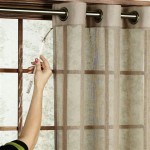How to Clean Stamped Concrete Patio: A Comprehensive Guide
Stamped concrete patios offer an attractive and durable outdoor surface, replicating the look of natural stone, brick, or other materials at a lower cost and with greater design flexibility. However, like all exterior surfaces, stamped concrete requires regular cleaning and maintenance to retain its aesthetic appeal and structural integrity. Understanding the proper cleaning techniques is crucial for preventing damage and ensuring the longevity of the patio.
The accumulation of dirt, debris, mold, mildew, and stains can detract from the beauty of stamped concrete. Furthermore, neglecting proper cleaning can lead to more significant issues, such as cracking, crumbling, and discoloration. This article provides a detailed guide on how to clean a stamped concrete patio effectively, covering various methods and considerations for maintaining its pristine condition.
Preparing the Patio for Cleaning
Before commencing the actual cleaning process, it is essential to prepare the patio surface. This involves removing loose debris and protecting surrounding areas. Proper preparation streamlines the cleaning process and prevents potential damage to landscaping or adjacent structures.
The initial step is to clear the patio of all furniture, potted plants, and other movable objects. This will allow for unrestricted access to the entire surface and prevent these items from becoming soiled during cleaning. Remove any loose debris such as leaves, twigs, pebbles, and dirt using a broom or leaf blower. For larger debris accumulations, a stiff-bristled broom is generally more effective in dislodging stubborn material.
Consider protecting any nearby landscaping or delicate surfaces that might be sensitive to cleaning solutions or high-pressure water. This can be achieved by covering plants with plastic sheeting or tarps. Masking tape can be used to protect adjacent surfaces, such as siding or painted trim, from overspray or accidental contact with cleaning agents.
It is also beneficial to inspect the patio for any existing damage, such as cracks, chips, or loose sealant. Addressing these issues before cleaning can prevent further deterioration. Small cracks can be filled with concrete patching compound, and loose sealant should be replaced to prevent water penetration.
Choosing the Right Cleaning Method
The selection of the appropriate cleaning method depends on the type and severity of the staining or dirt present. Mild stains and general cleaning can often be accomplished with simple solutions and methods, while more stubborn stains may necessitate stronger cleaning agents or specialized equipment. Several cleaning methods are available, each offering distinct advantages and disadvantages.
One of the simplest methods is to use a solution of mild soap and water. A common household dish soap is often sufficient for removing light dirt and grime. Mix the soap with water in a bucket according to the manufacturer's instructions. Apply the solution to the patio surface using a mop or sponge. Allow the solution to dwell for a few minutes to loosen dirt and then scrub the affected areas with a soft-bristled brush. Rinse thoroughly with clean water to remove any soap residue.
For more stubborn stains, a pressure washer can be employed. This method uses high-pressure water to blast away dirt, mold, and mildew. However, caution must be exercised when using a pressure washer on stamped concrete, as excessive pressure can damage the surface, especially if the sealant is compromised. It is recommended to use a wide-angle nozzle and maintain a safe distance from the surface. Start with a low-pressure setting and gradually increase the pressure as needed. Avoid holding the nozzle in one spot for an extended period, as this can etch the concrete.
For specific types of stains, specialized cleaning solutions may be required. For example, mold and mildew can be treated with a solution of bleach and water. Mix one part bleach with ten parts water in a spray bottle. Apply the solution to the affected areas and allow it to dwell for 10-15 minutes. Scrub the area with a stiff-bristled brush and rinse thoroughly with clean water. Exercise caution when using bleach, as it can discolor some surfaces and should be handled with appropriate safety precautions, including wearing gloves and eye protection. Alternatively, commercial mold and mildew removers designed for concrete surfaces are also available.
Oil stains can be particularly challenging to remove from stamped concrete. One effective method is to use a degreasing agent specifically designed for concrete. Apply the degreaser to the stain and allow it to dwell for the recommended time, as specified by the manufacturer. Scrub the area with a stiff-bristled brush and rinse thoroughly with clean water. For persistent oil stains, multiple applications may be necessary. Another option is to use an absorbent material, such as cat litter or baking soda, to soak up the oil before applying the degreaser.
Acidic cleaners should generally be avoided on stamped concrete, as they can damage or etch the surface. If an acidic cleaner is necessary for a specific stain, it should be diluted appropriately and used with extreme caution. Always test the cleaner in an inconspicuous area first to ensure it does not cause any discoloration or damage.
Post-Cleaning Maintenance and Protection
Once the patio has been thoroughly cleaned, it is crucial to implement measures to maintain its cleanliness and protect it from future damage. Regular sweeping and occasional rinsing with water can help prevent the build-up of dirt and debris. Applying a sealant to the stamped concrete is essential for protecting it from moisture penetration, staining, and UV damage. The type of sealant and the frequency of application will depend on the specific climate and the level of traffic the patio receives.
Sealing stamped concrete provides a protective barrier that prevents water from seeping into the porous surface. Water penetration can lead to freeze-thaw damage in colder climates, causing the concrete to crack and crumble. Sealants also help to prevent stains from penetrating the surface, making them easier to clean. Furthermore, sealants enhance the color and sheen of the stamped concrete, giving it a more vibrant and attractive appearance.
There are two main types of sealants commonly used for stamped concrete: acrylic sealants and polyurethane sealants. Acrylic sealants are less expensive and easier to apply than polyurethane sealants. They provide a good level of protection and are suitable for patios that receive moderate traffic. Acrylic sealants typically need to be reapplied every one to two years. Polyurethane sealants are more durable and offer superior protection against abrasion, chemicals, and UV damage. They are ideal for patios that receive heavy traffic or are exposed to harsh weather conditions. Polyurethane sealants generally need to be reapplied every three to five years.
Before applying a sealant, ensure that the patio surface is clean and dry. Follow the manufacturer's instructions for application. Typically, the sealant is applied in thin, even coats using a roller or sprayer. Allow the sealant to dry completely between coats. Avoid applying sealant in direct sunlight or during periods of high humidity, as this can affect the drying time and the quality of the finish.
In addition to sealing, consider implementing other protective measures to prolong the life of the stamped concrete patio. Use doormats at entrances to prevent dirt and debris from being tracked onto the surface. Avoid using de-icing salts on the patio during winter, as these salts can damage the concrete. Instead, use sand or gravel for traction. Protect the patio from heavy objects by using furniture pads or coasters under furniture legs. Regularly inspect the patio for cracks or other damage and repair them promptly to prevent further deterioration.
By following these guidelines, homeowners can effectively clean and maintain their stamped concrete patios, ensuring their beauty and durability for years to come. Consistent care and preventative measures are key to preserving the investment and enjoying the benefits of a well-maintained outdoor space.
Addressing Common Stamped Concrete Cleaning Challenges
While general cleaning methods are suitable for routine maintenance, some specific challenges require targeted solutions. These challenges often involve stubborn stains, efflorescence, or issues related to sealant application and removal.
Efflorescence, a white, powdery deposit that appears on the surface of concrete, is caused by soluble salts rising to the surface with moisture and then being left behind as the water evaporates. While generally harmless to the concrete's structural integrity, efflorescence can be aesthetically unappealing. To remove efflorescence, dry brushing with a stiff-bristled brush can often be effective for light deposits. For heavier deposits, a mild acidic cleaner designed for concrete can be used. However, it's crucial to dilute the cleaner according to the manufacturer's instructions and test it in an inconspicuous area first to ensure it doesn't damage the colored concrete. Thorough rinsing with clean water after cleaning is essential to remove all traces of the acidic cleaner.
Removing old or failing sealant presents another common challenge. Over time, sealant can become yellowed, cracked, or peeled, diminishing the appearance of the stamped concrete. To remove old sealant, chemical strippers specifically designed for concrete sealants are typically required. These strippers soften the sealant, allowing it to be scraped away. It’s important to choose a stripper compatible with the type of sealant previously applied. After applying the stripper according to the manufacturer's instructions, use a plastic scraper or putty knife to remove the softened sealant. Avoid using metal tools, as they can scratch the concrete surface. After removing the old sealant, thoroughly clean the surface with a pressure washer to remove any remaining residue before applying a new coat of sealant.
Dealing with organic stains, such as those caused by leaves, berries, or tannins from wood, requires a different approach. These stains often penetrate the porous concrete surface and can be difficult to remove completely. A solution of oxygen bleach (sodium percarbonate) can be effective for removing organic stains. Mix the oxygen bleach with water according to the manufacturer's instructions and apply it to the stained area. Allow the solution to dwell for several hours or overnight, keeping the area moist. Scrub the area with a stiff-bristled brush and rinse thoroughly with clean water. Multiple applications may be necessary to completely remove the stain.
Preventing these challenges through proactive maintenance is always preferable. Regular sweeping, prompt removal of spills and debris, and periodic resealing will significantly reduce the likelihood of stubborn stains, efflorescence, and sealant failure. By understanding the potential challenges and implementing appropriate cleaning and maintenance practices, homeowners can preserve the beauty and longevity of their stamped concrete patios.

How To Clean Stamped Concrete Morrison Custom

How To Clean Stamped Concrete Zephyr Thomas

Cleaning And Maintaining Stamped Concrete Blackwater

How To Clean Stamped Concrete And Maintain It

How To Clean And Seal A Stamped Concrete Patio New Or Old Youtube

How To Clean Stamped Concrete My Best Method Youtube

Stamped Concrete Patio Cleaning Sealing In St Charles Il Stone Brick Pavers Walkway Driveway Landscape Paver Restoration Contractors

How To Clean A Concrete Patio Maintenance Tips Network

How To Clean Pattern Imprinted Stamped Textured Concrete Be Softwash Ltd

Stamped Concrete Sealing Macomb Twp Deccon Restoration








